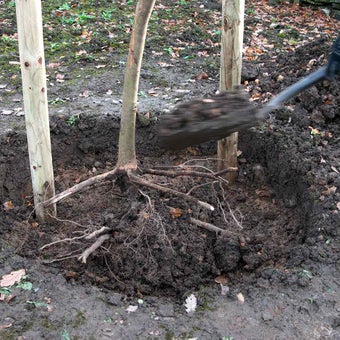
Quick facts
Suitable for - Lime, ash, beech, hornbeam
Timing - Train shoots in summer, prune in winter
Difficulty - Difficult
Suitable for...
Tilia (lime) is the most commonly used tree for pleached walks; usually the red-twigged lime (Tilia platyphyllos ‘Rubra’). Ash, beech, chestnut, hornbeam and plane can also be pleached, as can apples and pears. These can often be obtained ready trained.
Laburnum and wisteria are favoured for pleached arbours and covered walks, especially tunnels, which show off the attractive flowers perfectly. Use wisteria grown from or raised by , as it will flower more reliably and uniformly than seed-raised plants, and Laburnum x watereri ‘Vossii’ is a better choice than seed-raised L. anagyroides.
When to pleach
Always select young, whippy plants that are more easily trained for any pleaching.
Plant in winter and during the early years also prune in the winter when the plants are leafless and .
Train and tie new shoots in over the summer.
Once pleached trees have reached their full extent, prune in the summer, pruning to shape the tree growth and reduce its vigour.
How to pleach
Pleached tree walks
- Plant trees in single or parallel rows 1.2m (4ft) apart in the row and at the same spacing between parallel rows
- Allow 2.4-3m (8-10ft) between rows to provide a pathway
- It is helpful in the early stages to have a light support framework of stakes or stout canes and wires or cord, to which the new shoots can be trained, forming the basic branch framework
- During the growing season, tie in young growths while they are still supple to the supports. Laterals should be plaited with those of neighbouring trees
- Unwanted, outward-growing shoots can be pruned back to one or two from the base during early autumn or winter. leading growths to encourage bushiness
- When the branch system has been formed, shorten back all shoot growth annually to retain the shape This annual pruning should be back to a single for trees grown for their foliage, such as limes
- Once the basic branch framework has been established and the hedge is sufficiently sturdy to be self-supporting, then the supports can be removed
Arbours and tunnels
- A permanent support is necessary for arbours and tunnels, so use a sturdy metal framework. A frame about 2.4m (8ft) tall is ideal, don’t go much lower than 2.1m (7ft), or once the framework is covered, you won’t be able to walk though it
- Allow at least 2m (6½ft) width, with a maximum of 3m (10ft)
- Space plants at between 2 and 2.4m (6 and 8ft) apart on each side of the or tunnel
- Tie in the main shoots to supports during the growing season
- Basic training is as for pleaching walks, except for laburnum and wisteria, which need to be pruned back to three or four buds from the base unless needed to extend the branch framework; then they can be shortened back by a third
Problems
If while pruning or pleaching, you notice that your plants are looking sickly, consider whether young plants are struggling to establish or whether an underlying disease such as honey fungus, phytophthora root rots or verticillium wilt are to blame.



